Conway, Capital of the Hermit County
“In the winter of 1884, J.C. Hemphill called Horry the “Hermit County,” noting that Conway seemed “as near out of this world as any
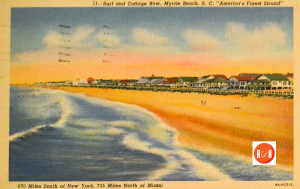
Postcard images of Myrtle Beach, courtesy of the Revels Collection – 2015
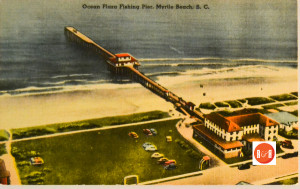
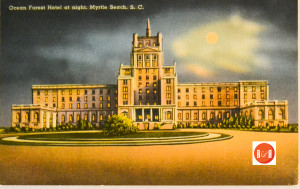 place my wandering feet have ever found.”* To get there from Marion, only thirty-seven miles away, he rode for eight hours through swamps with water sometimes up to the buggy cushions. It was largely, he wrote, “an exceedingly dreary and desolate reach of country” with crude houses and few crops … a land that traditionally produced only lumber, shingles, naval stores, hides, and wool. Nevertheless, despite the absence of railroads, Hemphill wrote that “the much derided Independent Republic of Horry
place my wandering feet have ever found.”* To get there from Marion, only thirty-seven miles away, he rode for eight hours through swamps with water sometimes up to the buggy cushions. It was largely, he wrote, “an exceedingly dreary and desolate reach of country” with crude houses and few crops … a land that traditionally produced only lumber, shingles, naval stores, hides, and wool. Nevertheless, despite the absence of railroads, Hemphill wrote that “the much derided Independent Republic of Horry
is beginning to break down the walls which so long shut it out from the world.” John I. Green, who visited there six years later, was certain that change had come and still more was on the way. Green, dreamer that he was, even suggested that the ocean beaches of Horry—now South Carolina’s famed “Grand Strand”—might someday welcome Northern tourists.
Conway, the site of Horry County, stands on a high bluff on the west side of Waccamaw River, about fifty miles above Georgetown, at the mouth of Lake Kingston. There is not elsewhere in the lower \ part of the State a more beautiful site for a town. The Waccamaw is one of the prettiest and more important streams in the low country, and the waters are so pure that vessels going to sea ascend it to fill their water casks. The cause of this purity is found in the river’s source, which is in the highlands of North Carolina. Standing at the wharves here, where the trains run down to the water’s edge, one enjoys several lovely views. To the south and west is the river, a broad and placid stream. On one side rises the bluff, covered with trees and plants of the temperate zone, while on the other the eye loses itself in a swamp, where the vegetation flourishes in a tropical vigor and luxuriance. In the spring there is a wealth of radiance and color. The air is vibrant with the songs of birds, and redolent with the exquisite perfume of flowers innumerable. Here one may revel in all that goes to make Southern life so delicious. Nature has been prodigal with her rarest charms. There is on every hand an infinitude of variety and deep draughts of enjoyment intoxicate every sense.
North of the wharves the lake stretches for several hundred yards before it bends. At its mouth there is a draw bridge almost Venetian in delicacy of construction. A little further up, a grove of giant live oaks crown the bank, and at the bend there is a pretty residence and a mill. Viewed from the wharves, all this forms a charming tout ensemble.
The country around here was originally an unbroken pine forest, and only a small portion has yet been cleared. The soil is light and is especially suitable for truck farming and grape culture. The grapes grows wild here in many places. As several residents have remarked to me, it is so easy to live here that the people have grown lazy. But this is only according to the general law—that where nature does much man does very little. This, however, only applies to a primitive state, where the population is sparse and the people have a very limited knowledge of the artificial wants of civilization. Now that this section has been opened to the world every resource has a value, and every advantage will find appreciation. But, before considering in detail the advantages and resources of this section it is necessary to look upon the place in its isolation, and its gradual emergence therefrom, for in this will be found the causes of the lack of development which surprise the stranger.
POSTCARDS – Courtesy of the AFLLC Collection, 2017
Where in the whole country will you find another county seat which is not incorporated? Public opinion is the only direction of municipal affairs in this town, if it is not too much to say that there are any municipal affairs. While this speaks well for the fraternal spirit of the inhabitants and the influence of the Gospel, it does not indicate much advancement on worldly lines. Thus it is throughout the county—the Golden Rule is more potent than the laws of the land. Some years ago a correspondent of the News and Courier called Horry “The Hermit County.” It was a very appropriate sobriquet. If the county was hermit like in its isolation, it was equally so in the rectitude of conduct which prevailed among its population. Today one may find throughout the county many houses whose welcoming doors are never barred by locks and many barns without any doors at all. Is not this as worthy a source of pride as costly structures and the veneer of social refinement?
Until the fall of 1887 there was no railway connection with this place. Immediately after the war a small steamer began to come here occasionally. Irregular communication continued until 1870, when all boats ceased to visit this place. Two vessels came as far as Pott’s Bluff, ten miles below here. Freight had to be carried to and from that place on lighters, which were poled. It sometimes took a week to make this trip of ten miles. This deplorable state of affairs continued until 1875, when a small tug began trading by lighters with this place. These lighters were vessels, wharves, ware houses, and shops combined. They were roofed with canvas, counters and shelves were improvised, and when they came up to the wharves the clerks were in their places ready to serve customers.
In 1880 the trade had grown to such an extent that three vessels were trading between Pott’s Bluff and New York regularly, and extra vessels were put on in the turpentine season. In 1878 Messrs. Burroughs & Collins had laid the foundation for the present line of steamers by purchasing the Juniper. At this time Capt. T.W. Daggett, the present government contractor for river improvements in this section, put on the J.M. Cook. Four or five years later the Maggie was built, and a short while afterwards the Ruth and Driver were put on. The Maggie, Driver, and Ruth form the present line of steamers between this place and Georgetown. Vessels come as far as Bucksport where there is the largest lumber mill in the State, and a mail steamer makes a trip there three times a week.
It will be seen from the above that the trade of this section has grown steadily and rapidly since the war. In 1874 there was not a steam gin in the county—only two horse-power gins and two water gins. The whole county produced only 75 bales of cotton. A report of trade for the year ending July 1,1889, indicates that 7,000 bales of cotton, 98,400 barrels of rosin and tar, 16,400 barrels of turpentine, 8,200,000 feet of lumber, 200,000 shingles, 11,500 barrels of clean rice, 131,500 bushels of rough rice, and some hides, honey, poultry, and fruit were shipped down the Waccamaw. Ninety per cent of this produce, it is said, originated in this county. This is only what has been done. There is practically no limit to what may be accomplished.
Doubtless for many years to come the naval stores trade and the lumber business will be the principal industry. Heretofore the lumbermen have confined themselves almost exclusively to the making of yellow pine lumber and cypress shingles. While there is great room yet for development in the latter industry, the field that offers the greatest advantages to the enterprising capitalist is the manufacture of hard woods. He would have the option of a rail or water route to the North. There is an abundance of white labor here, which can be employed at half the price paid for labor at the North.
This is unquestionably “a white man’s country.” At the last election the voting was as follows: whites, 2,502; negroes, 866. A third of the negro vote was cast with the whites. In other words, one-third of the people who, according to certain Republican Senators, live in a constant fear of being butchered, vote to maintain Democratic rule. I lay particular stress on the fact of the supremacy of the whites in this section, because it is a well-known fact that the negroes have been an obstacle in the way of immigration. In 1880 the total white population of the county was 10,639; negroes, 4,935. Since then the negro population has decreased about 25 per cent by emigration to Georgia and Western States. During the same period the white population has increased about 25 per cent from natural causes and influx of immigrants from Marion, Marlboro, and Williamsburg counties, where the “no fence” law proved onerous to many of the people engaged in stock raising. (While learning of Horry’s local history be sure to also visit their school image page.)
While upon this subject it may be as well to quote a few figures to show the condition of the county. The only debt of the county is that of $37,000, which was voted by four townships to the Wilmington, Chadboume, and Conway Railroad. The current expense account of the county is smaller than that of any other county in the state…. When it is remembered that there are no municipal ordinances to violate, and that the sheriff has charge of all criminals, one perceives the full significance of the facts which have just been stated. There are no statistics as to the health of any portion of the State, save the larger cities, which have their own laws on the matter, but, if one may offer the evidence of competent and credible physicians, it can be easily proven that the rate of mortality for this county is as low as that of any section of the South. There are not, probably, half a dozen consumptives in the whole county. The mild climate and the terebinthine odors from the pine forests are the causes of this. Now that it has been shown that there is nothing in the population or climate which is unfavorable to the investment of large amounts of capital, we will examine further the county’s resources.
There are thousands of acres of land, worth $2 or $3 an acre, which would grow numerous varieties of vegetables or grapes. On every hand there is an abundance of small woods of every variety. For thirty or forty miles along the river above here there are beds of the finest marl, and along the lake there is any quantity of lime rock. Under the marl beds there are phosphate deposits which have been declared valuable by competent experts. A few miles down the river there are old salt works, which were very profitable before the war. By solar evaporation salt can be made for 15 cents a bushel, in large quantities. At Little River and Murrell’s Inlet, near the coast, there are beds of fine oysters, where canning works would doubtless pay well. Coral reefs run parallel with the coast at a distance of three miles. Between the reefs and the coast there is deep water, where fish abound. There are already in operation several extensive fisheries.
A movement is on foot for the establishment of a cotton factory. This project is supported by some of the most influential men in the county and will doubtless succeed. The establishment of this factory means a great deal to both the town and county—probably more to the county. It is very necessary to turn the attention of the people to new enterprises, and to show them that a greater prosperity may be had from new pursuits than from the old ones. Now there is nothing to keep money in the county. All manufactured goods are purchased at the North. The question arises: “What is to be done when the naval store supply is exhausted, when the pine forests are destroyed?” These are being sent away each year, and nothing is derived from their sale but the necessaries of life. A stimulus to agriculture is necessary. Money should be kept in the country as far as possible, and the rising generation should find employment at home. Further, it goes without saying that if this factory is satisfactorily established, other manufacturing industries will follow, and soon some of aU the various kinds of raw material at hand will be utilized by local factories.
A turnpike road of twelve miles length would give access to the ocean, where there is as fine a beach as there is in the country. What is lacking? People go in thousands every year to Florida to get what abounds here. This section has one advantage—that of climate. While the air is balmy here it is not enervating. You will ask, perhaps, “If there is such a bonanza in a fine hotel, why don’t these people build one?” I must give you the musty answer: “Because they haven’t the capital.” But wait a moment. There are two capitalists who are willing to put their money into a hotel, but their other interests are so large that they cannot give the matter their undivided attention. They are Mr. B.G. Collins and Mr. J.H. Chadbourne, Jr., the genial and enterprising superintendent of the Wilmington, Chadbourne, and Conway Railroad. Mr. Collins has large mercantile and shipping interests, which require all of his time, and Mr. Chadbourne is largely interested in cotton factories and the lumber trade. But both of these gentlemen are anxious to subscribe for the stock of a company that will build a first-class hotel and are willing to take a majority of the stock. This looks like business, doesn’t it? This is certainly a golden opportunity for an enterprising hotel man. The table can be supplied for a mere song, so to speak, from the fields and dairies about here, while the great stock ranges of the lower part of the country would furnish superb beef. If seeing is believing, the best thing that these people can do to advertise their many resources is to bring people to look at them.
There is not a more kindly or hospitable people than the citizens of this town. They are ready to welcome all who wish to join in the development of the place. Old fogyism is dying out rapidly before modem ideas and modem methods. In educational and religious advantages Conway is the equal of many of her more fortunate sisters. About fifteen years ago the Burroughs High School was founded by Mr. F.G. Burroughs of Burroughs & Collins. Today it will compare favorably with any high school in the State. It is a two-story building, with a large recitation room, music rooms, and sleeping apartments for students. In mathematics the course extends through plane geometry, and in Latin through Caesar and Virgil. Mr. J.H. Dysinger is the principal, and Miss Effie Burroughs is his assistant. Miss Mary E. Pearce has charge of the music department.
In the school building is the Burroughs Library, which was founded for the use of the town. It contains five hundred volumes of choice literature. ‘Trash” finds no place in its bookcases. The professions are represented as follows: Lawyers—Johnson & Quattlebaum, Thos. F. Gillespie, and R.F. Scarborough; Physicians—C. Norton, A.H.J. Galbreith, and P.K. Bethea. The business houses are Burroughs & Collins, F.P. Cammack, J.A. Mayo, MB. Beaty, W.K. Lewis and —– Dusenburg. The Horry Herald is under the management of Dr. E. Norton. It is not only one of the most progressive little sheets in the State editorially, but its “make-up,” if you will pardon a technicality, displays considerable enterprise. The Masons and Knights of Honor have flourishing lodges, and the former own a handsome little hall.
I cannot better summarize than by reproducing from the Horry Herald the following: Only a few years ago we were completely isolated from the world, comparatively unknown beyond our borders and ignorant of the ways and manners of living of our nearest neighbors, with nothing ahead of us to encourage or impell [sic] us to greater efforts. We were content to live as our fathers before us had lived, struggling along in darkness and eking out an existence of a precarious and uncertain kind. Then came the revolution in the shape of the railroad, and with its advent new life seemed to be infused into us.
Verily, there is no time like the present for investment here. The people are thoroughly aroused to the necessity of new enterprises, and anyone who will assist them in the development of their great resources will find a welcome with every opportunity and gratitude mingled with profit.”
Reprinted from South Carolina in the 1880s: A Gazetteer by J.H. Moore, Sandlapper Publishing Company – 1989
Stay Connected
Explore history, houses, and stories across S.C. Your membership provides you with updates on regional topics, information on historic research, preservation, and monthly feature articles. But remember R&R wants to hear from you and assist in preserving your own family genealogy and memorabilia.
Visit the Southern Queries – Forum to receive assistance in answering questions, discuss genealogy, and enjoy exploring preservation topics with other members. Also listed are several history and genealogical researchers for hire.
User comments welcome — post at the bottom of this page.
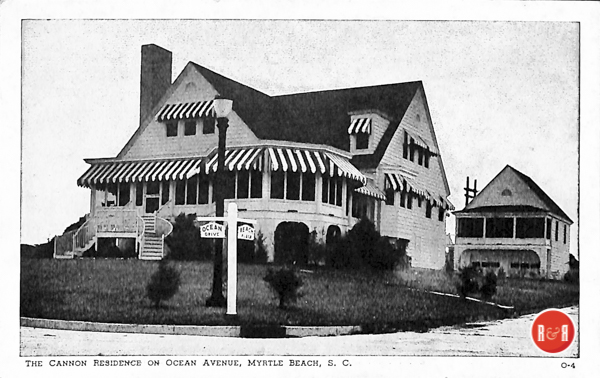
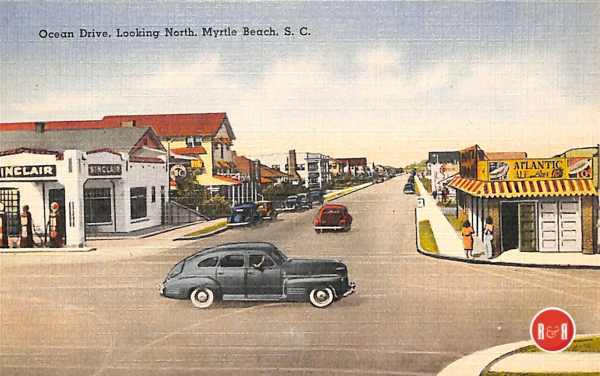
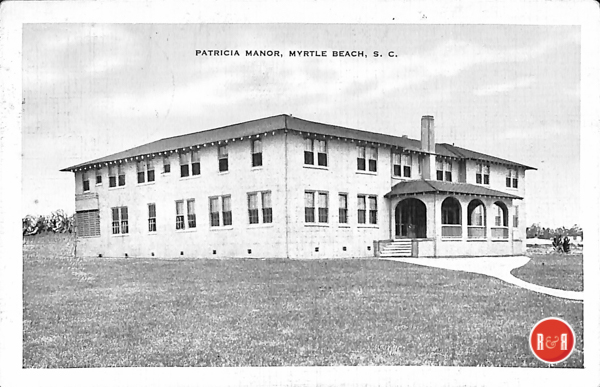
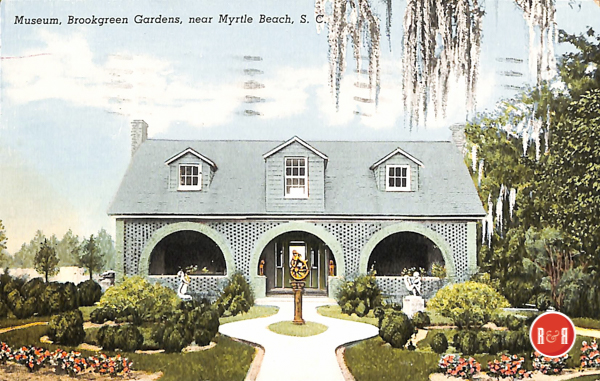
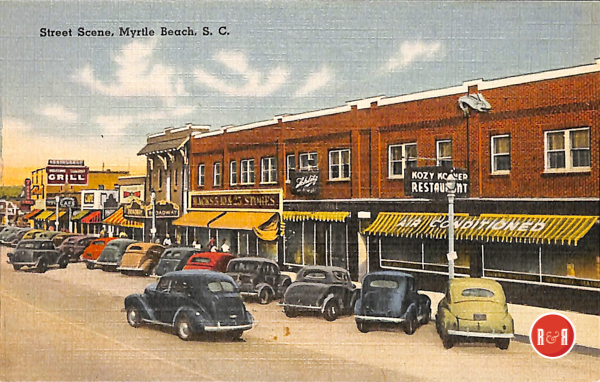
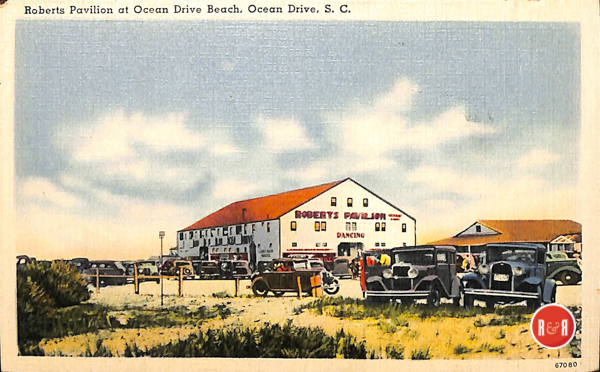
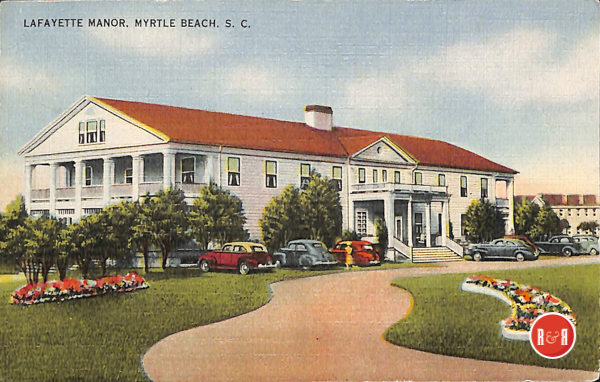
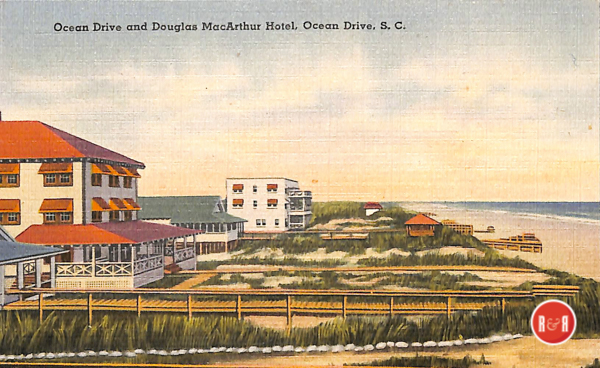
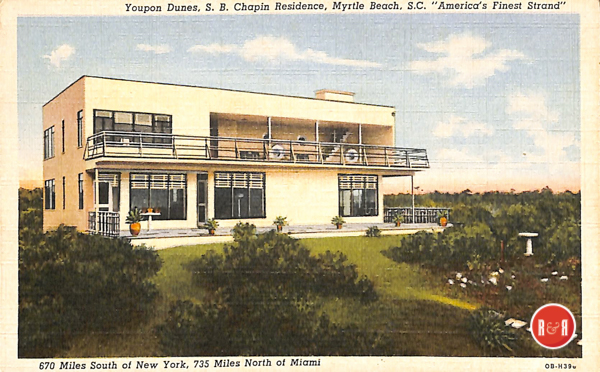
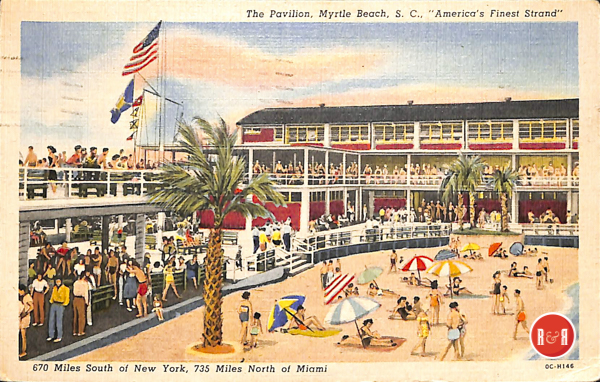
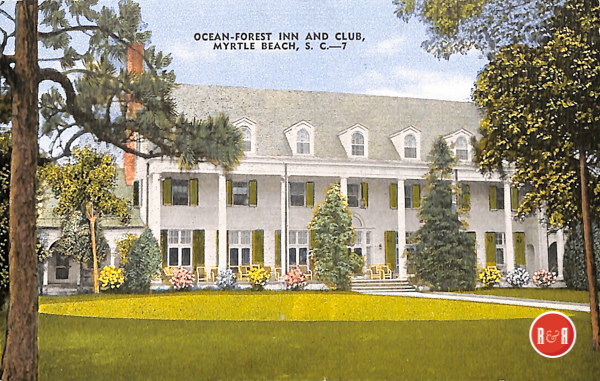
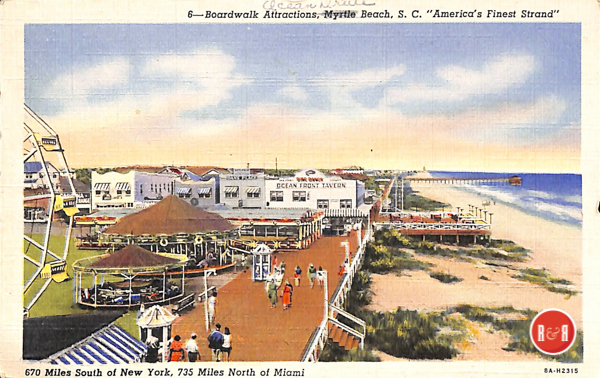
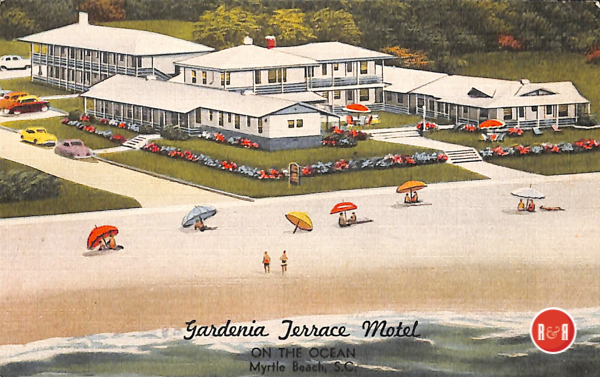
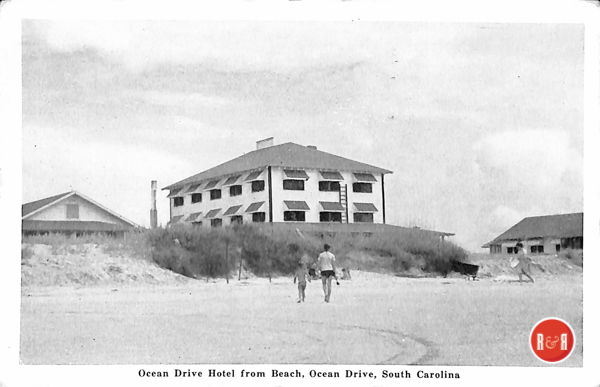
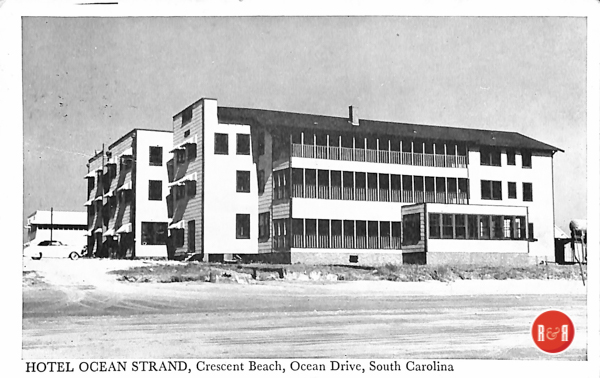
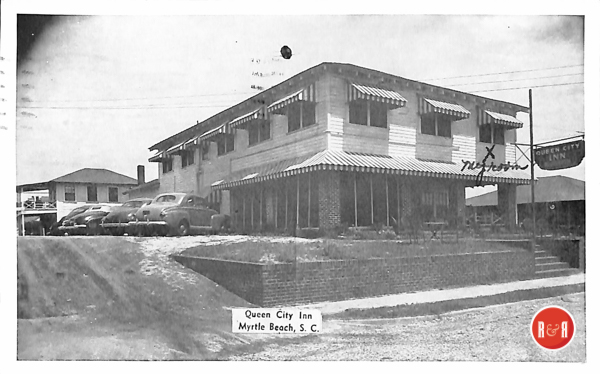
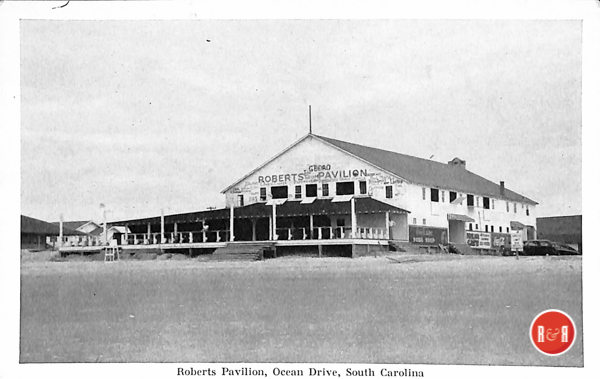
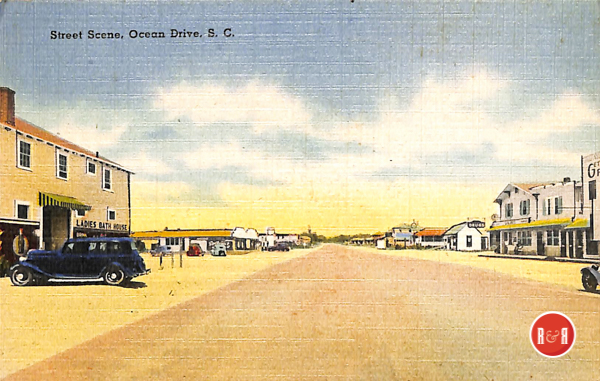
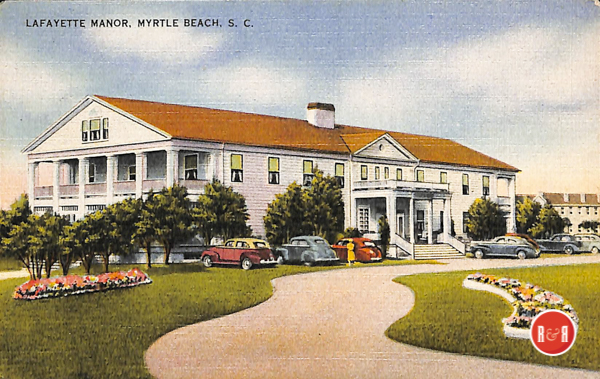
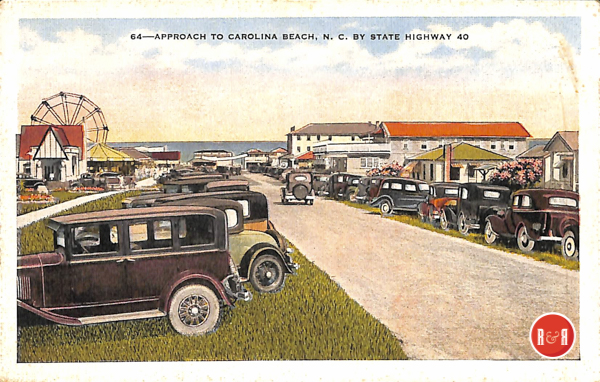
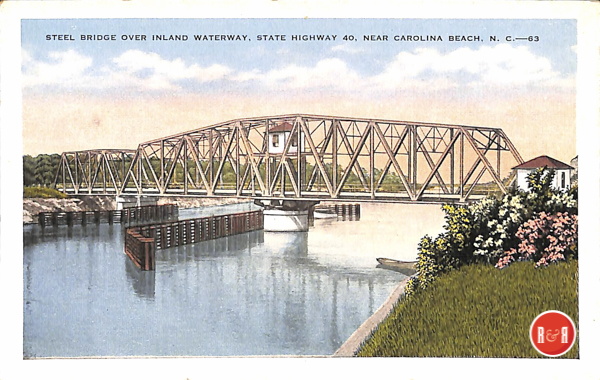
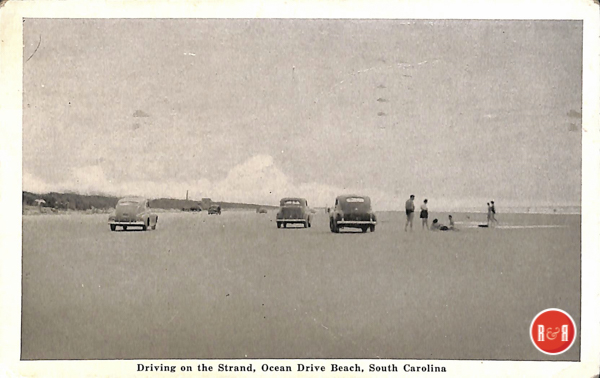
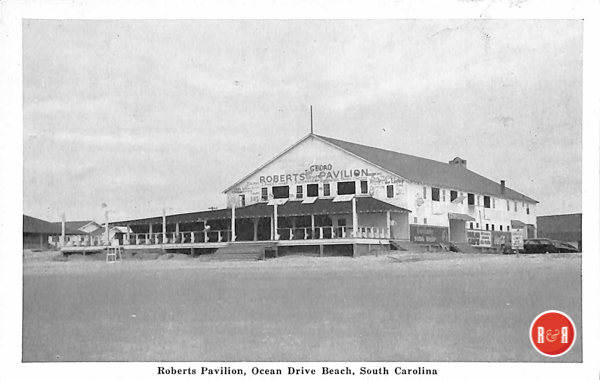
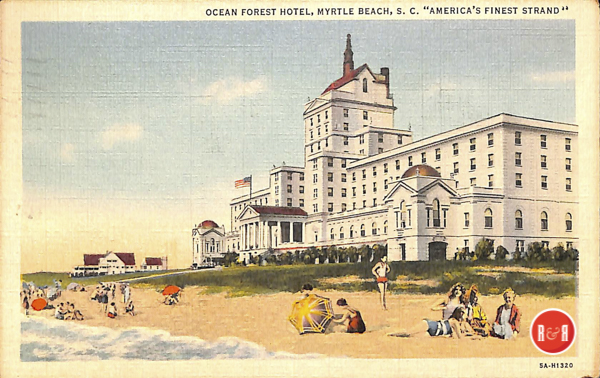
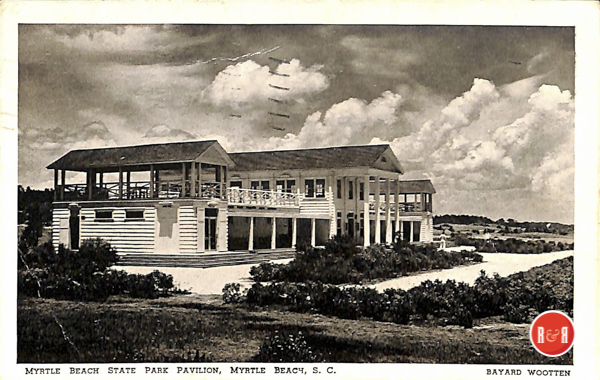
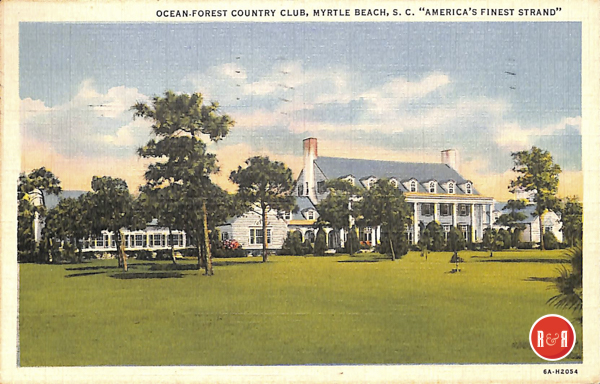

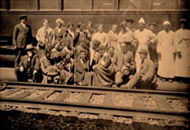
Share Your Comments & Feedback: